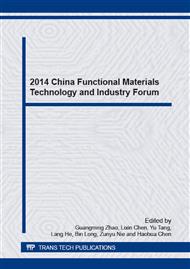p.140
p.144
p.155
p.161
p.169
p.175
p.180
p.187
p.193
Fabrication of Highly Hydrophobic Polyurethane Foam for the Oil-Absorption Application
Abstract:
Hydrophobic polyurethane (PU) sponge for oil absorption application was fabricated by ZnO nanomaterial coating and stearic acid modification on ZnO surface. The contact angle and oil absorbent capacity ability of the obtained sponge were measured. It was demonstrated that both ZnO nanoparticle and ZnO nanorod coated PU sponge (ZnO NPs-PU and ZnO NRs-PU) showed good hydrophobicity and oil absorbent ability. ZnO NPs-PU and ZnO NRs-PU sponges have absorbent capacities of 18~92 times and 20~98 times of their own weight for different organic liquids, respectively. Moreover, the absorption capacity of the ZnO NRs-PU sponge did not deteriorate over 50 cycles. Therefore, the ZnO NRs-PU sponge has excellent recyclability for future application.
Info:
Periodical:
Pages:
169-174
Citation:
Online since:
December 2014
Authors:
Keywords:
Price:
Сopyright:
© 2015 Trans Tech Publications Ltd. All Rights Reserved
Share:
Citation:


